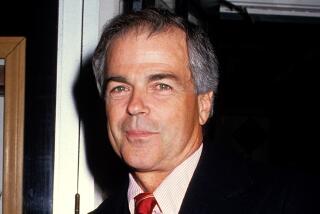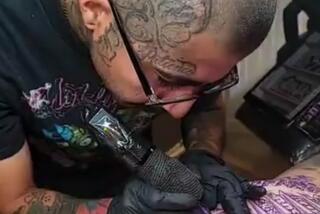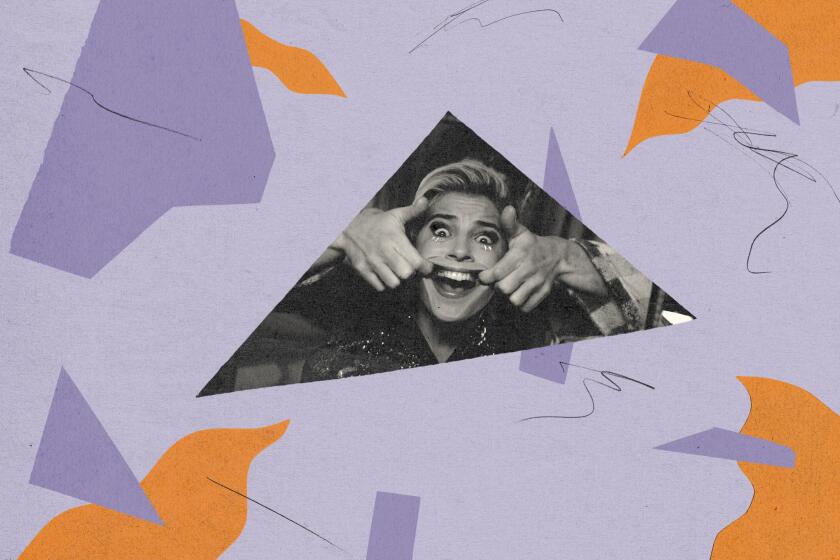Billboard rock royalty on the Sunset Strip
Video may have killed the radio star, but it also sounded the death knell for the era of the rock ‘n’ roll billboards that dominated a 1.7-mile strip of Sunset Boulevard for three decades starting in the late ‘60s. Slick ads for fashion and TV shows have replaced those hand-painted monuments to rock gods such as the Rolling Stones, Alice Cooper and Led Zeppelin that might have been relegated to the memories of a generation were it not for the foresight of a curious 16-year-old.
Robert Landau was living with his father in the hills above Tower Records when he walked down to Sunset Boulevard one morning and saw a 15-foot-high replica of the Beatles strolling single file in a zebra crossing from their “Abbey Road” album cover.
PHOTOS: Arts and culture in pictures
He grabbed his Nikkormat camera and Kodachrome film and snapped a photo. Good thing because a few days later an overzealous fan chopped off Paul McCartney’s head, which had extended above the frame.
Landau continued taking photos of the billboards for the next 15 years, then stored them away until rediscovering them a few years ago. “I realized this was a really unique art form that nobody outside of L.A. saw or even people that didn’t frequent the strip because they’d be up for a month, then they’d be gone,” said Landau.
This piece of commercial art history has been preserved with the publication of “Rock ‘n’ Roll Billboards of the Sunset Strip” (Angel City Press), which includes around 200 of his nearly 500 photographs.
Although Landau’s journey began with the Beatles, it was the Doors who apparently were the first band to experiment with this new sleek format. It was the lively Vegas billboards that had dotted the strip that got labels like Elektra thinking it was an ideal location to promote entertainment in L.A. The Sunset Strip offered a captive audience stuck in cars, accompanied by music pouring out of the Whisky a Go Go and Gazzarri’s.
The billboards were less of a profit-making venture than a way for the labels to show their commitment to the artists and stroke egos.
The two largest outdoor advertising companies at that time, Pacific Outdoor and Foster and Kleiser, employed the best quality craftsmen, many with degrees in fine arts. They hand painted the illustrations on wood panels at the hanger-like warehouses in midtown L.A. The pieces were broken down, then reassembled in the early morning hours on location. The billboards took about 10 days to produce with price tags starting at $1,200 and peaking at $10,000.
Landau studied photography at CalArts but grew up around art. His father owned the Felix Landau Gallery on La Cienega Boulevard. As a photographer documenting various aspects of L.A.’s urban landscape, Landau has published several books including “Hollywood Poolside.”
What became of McCartney’s head? They found the culprit, who had kept his head, and brought the relic to the book’s release party where it was presented Mario Rueda, the 94-year-old artist who had painted it.
MORE:
CRITIC’S PICKS: Fall Arts Preview
TIMELINE: John Cage’s Los Angeles
PHOTOS: Arts and culture in pictures
More to Read
The biggest entertainment stories
Get our big stories about Hollywood, film, television, music, arts, culture and more right in your inbox as soon as they publish.
You may occasionally receive promotional content from the Los Angeles Times.










